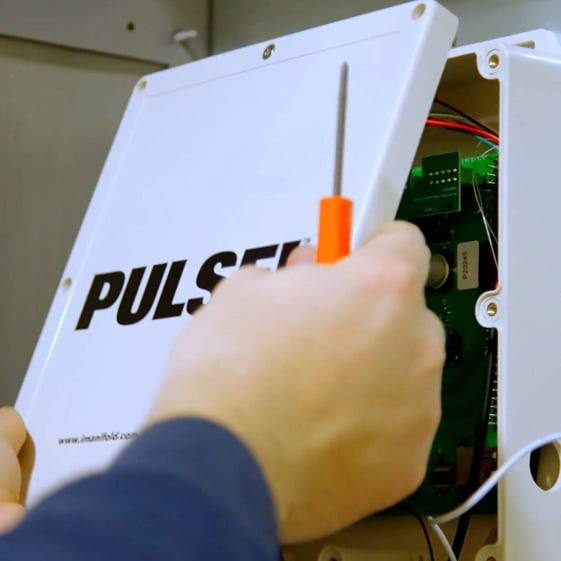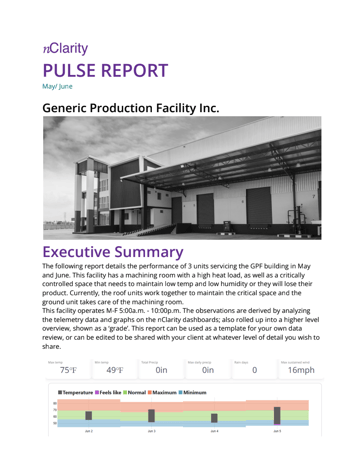Last week, we explored the unfair sales advantage that Predictive Maintenance (PdM) with IoT-Based Real-Time HVAC Monitoring provides contractor sales teams. The “why”, in other words.
So assuming you like the “why”, today, we'll delve into the implementation process - the "how" part of the equation.
We’ll call this the PdM Go-To-Market Strategy.
It fundamentally breaks down into two key phases:
Phase I. Proof of Concept: Target and install at least 3 key clients in your market to generate local customer advocates and case studies while building a framework for Service Ops deployment.
Phase II. Expand Teams to Attack New Markets: Apply what you’ve learned to roll your PdM solution out to new Service Ops teams, sales teams, and ultimately your markets.
Today, we’ll be diving deep into Phase I.
PdM Go-To-Market Strategy Phase I: Proof of Concept
The aim here is to introduce PdM technology to your operations and sales teams (in a manner that doesn't distract core Service Operations) and to create your first customer advocates/case studies in your selected local market.
This will be accomplished by embedding your PdM solution in key existing accounts and generating measurable results across the following areas:
- Uptime assurance
- Cost reduction
- Asset optimization
You will also see early indications of ROI (Service Ops productivity) from improved PM contract performance.
This critical first step will drive direct, transferable experience with your team. They will gain a deep understanding of how the platform transforms service delivery.
Whether it’s a tech describing it to his clients or a sales rep incorporating it into a proposal, this deeper understanding will drive a visceral, authentic connection with customers.
You will also build a local, core support network that will help drive the concept and value of PdM into your market through CRE organizations like BOMA and IFMA. This will be invaluable to sales teams in Phase II of your market development strategy.
nClarity’s IoT-Based Real-Time HVAC Monitoring Platform is a purpose-built mechanical service operations platform designed to be implemented with a small, focused team to ensure a higher probability of early success.
Refining processes and best practices with a small team first sets you up for future scale with minimal Service Ops distraction and investment.
You don’t need to “boil the ocean” to begin to implement a Predictive Maintenance strategy.
Here’s how it starts:

1. Collaborate with Service Operations
To start, you will need to educate a small segment of your operations team about PdM and IoT-Based Real-Time HVAC Monitoring. So, in addition to getting executive buy-in, think about targeting:
- 1 Market and its Service Ops leader
- 1 Supervisor
- 2 Techs
That’s it.
This will be your select team. They will go deep and go fast, building confidence, learning the platform, and establishing a foundation for future deployment across the whole of your contract base.

2. Identify Target Accounts
Work with nClarity’s Account team to target three buildings in your market that will demonstrate the measurable value of PdM and yield results for case studies.
These are typically going to be existing accounts that will quickly become advocates in your local market. The exception will be accounts that may be in jeopardy as described below.
Ideal accounts have the following characteristics:
- Uptime criticality
- Facilities where uptime is critical, such as manufacturing, BioPharma, and food processing facilities, that are financially impacted by HVAC downtime.
- Contracts at risk
- A long-term contract that will be up for renewal soon or a change in leadership that’s resulted in closer scrutiny of preventative maintenance costs.
- Remote facilities
- Contracts including remote facilities that are costly to physically cover.
- Post-pilot scaling opportunity
- Accounts that have numerous buildings in their portfolio & provide opportunities for future large-scale implementation.
- Aging equipment
- Contracts including buildings with aging packaged systems that could benefit from greater visibility into machine performance (data driven ROI).
These three buildings should give you the opportunity to demonstrate the measurable benefits of PdM with IoT-Based Monitoring so you can begin to generate local advocates and case studies.

3. Create a Plan for Approaching Accounts With a Pilot Offer
Approaching potential pilot accounts with a well-structured plan is essential to success.
Some key questions that nClarity will help you answer include:
- Will you fund the pilot or expect the customer to pay?
- Which benefits (KPIs) of PdM will you prioritize and monitor for each target account?
- Who, in your customer’s organization, will make the decision and how will you target/access that individual(s)?
- How will the offer be presented and what material/support will be needed?
As mentioned previously, your initial focus will be on existing accounts where you already have a PM agreement in place. This way, you can accelerate Phase I by building on your existing PM and relationship.

4. Bring Your First Buildings Online
As you secure your first three pilot sites, The nClarity Operations team will work with you to ensure building and equipment profile information is captured in the nClarity system.
Your select Service Ops team will then receive a series of training sessions from an nClarity Field Engineer, who will guide, train, and coach your team during your first wave of installs and ensure all systems are up and running.

5. Initiate Data Flow and Analysis
This is the fun part.
Within just a few weeks of installation, patterns will emerge from the machine and building data. A structured review of that data (what we call a Data Snapshot) will identify equipment issues, anomalies, and trends.
Your Service Ops team can then map out a plan of attack to address these and other issues. As we have seen in some accounts/buildings, this may also present your Project Sales teams with opportunities to financially justify equipment upgrades.
Over the coming months, you will generate case studies that will integrate into your sales process helping to illustrate the impact of PdM on facilities.
This is the money shot when it comes to true differentiation:
Deliver what FMs truly value, measure it, and document it.

6. Ramp Up
Once your sales team has gotten some experience working with this new model out in the field and observing its impact on Service Ops/clients, you will be nearing the end of Phase I of the PdM Go-To-Market Strategy. Here’s what that will look like:
- Your sales team will now be able to position a truly differentiated service model that finally bridges the gap between what customers expect and what you can afford to deliver. You can now approach new accounts with case studies that will give them an unfair advantage over the competition and help them overcome price.
- Your select operations team leader will be ready to work with his/her counterparts to train new teams and install on new buildings in a staged implementation across new and existing contracts.
When Service Ops and Sales are on the same page, you will be tough to beat.
Not only will you be able to scale this across your contract portfolio, but sales teams will also leverage this success to seamlessly integrate these documented benefits into their communications with future prospects. Stay tuned next week for nClarity’s 3-step PdM sales process.
Kickstart Your Journey Today
Sales leaders, the time to begin embedding PdM with IoT-Based Monitoring into your service offering is now.
This is analogous to building a hotel on Park Place in Monopoly. It’s an investment that breeds myriad other sales opportunities.
Early adopters of this technology will stay ahead of the curve as the Mechanical Service industry transitions from the Traditional PM to the Emerging PM.
Remember, FMs (especially those overseeing mission-critical operations) are eagerly exploring new opportunities to drive more uptime and reduce costs across their facilities. Their owners demand it.
Both you and your customers’ organizations stand to benefit here. Take the initiative and start the conversation with your clients and your leadership.
If you don’t, someone else will. It’s only a matter of time.
If you’re interested in learning more about how to sell Predictive Maintenance with IoT-Based Real-Time HVAC Monitoring, you can schedule a call with our team here.

